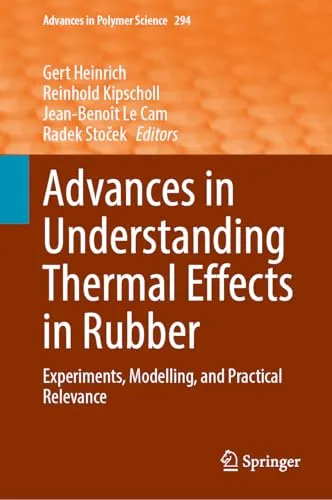- Témaindító
- #1
- Csatlakozás
- 2024.09.10.
- Üzenetek
- 25,854
- Reakció pontszám
- 8
- Díjak
- 5
- Kor
- 37

Free Download Advances in Understanding Thermal Effects in Rubber: Experiments, Modelling, and Practical Relevance by Gert Heinrich, Reinhold Kipscholl, Jean-Benoît Le Cam, Radek Stoček
English | PDF EPUB (True) | 2024 | Pages | ISBN : 303171055X | 79.1 MB
In the case of an ideal rubber, one often thinks of the linear dependence of the shear modulus on temperature as an expression of the typical entropy elasticity. However, temperature dependencies of typical technical rubber materials are known to be much more complicated. This has consequences for the practical behaviour of rubber-elastic components. One well-known instance of this is the dramatic Challenger disaster. The rubber used to seal the solid rocket booster joints with O-rings did not expand at temperatures of 0 °C or below, resulting in an opening in the solid rocket booster joint through which gas attempted to escape.
The main physical reason for the heat generation processes is the hysteresis of rubber materials due to deformation and viscoelasticity. Most elastomers therefore change significantly over time when exposed to heat (and likewise light or oxygen (ozone)). These changes can have a dramatic effect on the life and properties of the elastomers. Heat development in a rubber occurs when it is subjected to a variety of compressive stresses in service. Heat evolution tests are commonly performed to estimate the quality of use and expected service life of various compounds or material options for end-product applications. New developments in recent years on test methods in this direction constitute an important part of the book. At the same time, corresponding simulation and modelling methods have been developed that contribute to a better understanding and enable the predictive simulation of self-heating and the kinetics of temperature fields in complex cyclically loaded rubber components. Specifically, finite-strain thermal viscoelastic damage models for predicting the cyclic thermomechanical response of rubber specimens under fatigue are also presented, and analytical models for heat diffusion in stressed rubbers.
[/b]
Buy Premium From My Links To Get Resumable Support,Max Speed & Support Me
Code:
⚠
A kód megtekintéséhez jelentkezz be.
Please log in to view the code.
